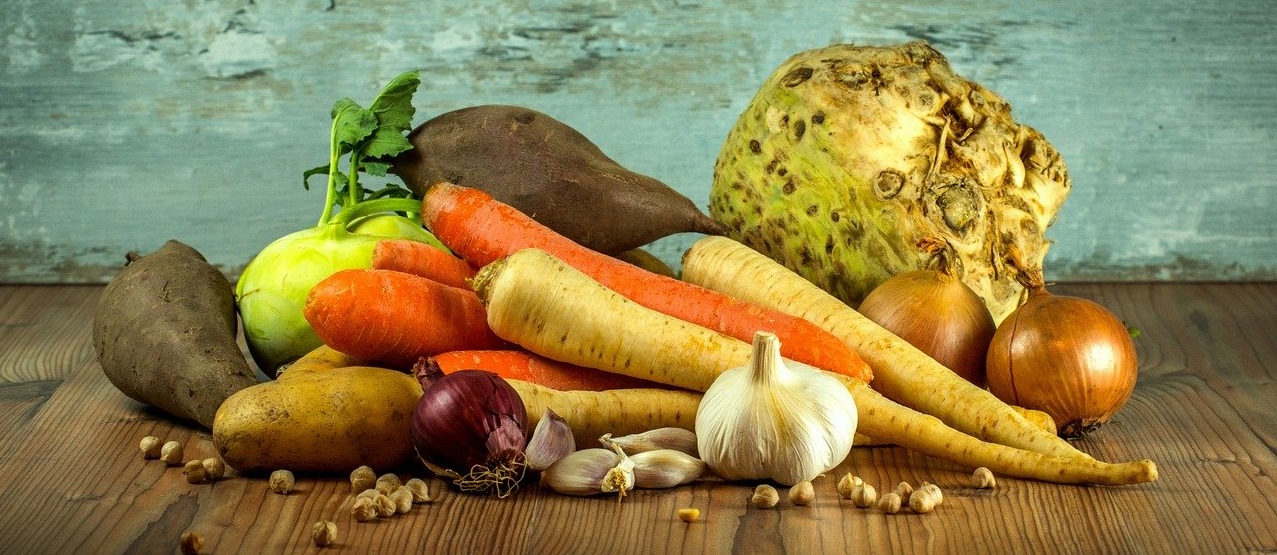Ayurvedic Guidelines for healthy digestion
As per Ayurveda, Agni (the digestive fire) is responsible for healthy digestion and metabolism. Healthy Agni; healthy being. Agni, the core fire, converts the ingested food to energy and maintain proper body functions. When Agni is functioning well, one feels healthy, strong and blissful.
Disturbances in Agni can lead to many diseases and imbalances. Most of the diseases occur due to weak or disturbed Agni, so correcting Agni, to keep healthy digestion is the first line of treatment in Ayurveda. Agni can be correlated with ‘digestive power of the body’.
When and how much to eat?
In Ayurvedic dietetics, selecting healthy eating time has a major role the same as ‘what to eat’. Ayurveda did not mention specific eating times and amount of food intake, but recommended ‘eat when you are hungry’ and ‘eat according to the strength of your appetite’.
Hunger indicates that the digestive enzymes are activated to the optimum level. One should stop eating when hunger subsides. Eating beyond the limit of hunger makes pressure on the digestive system, leads to indigestion and other digestive discomforts.
One should give importance to the following things-
- Jeerne – eat after the digestion of the previous meal and when hungry
- Hitam – healthy; meaning, suits with your constitution or imbalance
- Mitam – in limited quantity
Follow the ‘Rule of 1/4’
One should not eat solid foods more than two quarters (half) of the stomach size. The other quarter is for liquids and the last quarter needs to be empty for the proper mixing of food.
How many meals per day?
- Vata constitution – small meals frequently.
- Pitta constitution – 3 main meals and snacks in between.
- Kapha constitution – 2 or 3 meals, can skip breakfast or eat very light, if hungry. No snacks.
This is a general recommendation, and you can skip any of the meals if you are not hungry. You should leave a minimum 2-hour gap between each meal.
How to eat?
- Keep the habit of expressing thanks and prayers before eating.
- Sit comfortably, calm, relaxed and focus on eating
- While eating, avoid too much talking, reading books, using electronics and watching television.
- Either too slow and nor very fast.
- Proper chewing aids digestion
- Choose the food as per season
What to eat?
Ayurvedic diet is based on determining your dominant dosha and eating specific foods to balance the three doshas. Ayurveda believes in the theory of uniqueness, so the diet needs to be suitably customized for each person. Here are some general guidelines mentioned according to the constitution.
Vata constitution:
Vata people should choose the foods which are grounding, nourishing, warming, less spicy, oily but not deep-fried, cooked, easy to digest, sweet, sour and salty taste predominant.
Pitta constitution:
For Pitta choose the foods which are cooling, less spicy, alkaline, grounding, non-stimulating, sweet, bitter and astringent taste predominant.
Kapha constitution:
For Kapha people, the foods which are warming, less quantity, easy to digest, very less oily, pungent, bitter and astringent taste predominant are best.
Concept of raw food:

“Not all raw foods are bad and raw foods are not bad for all”. One can consume raw food depends on digestive strength, body constitution, climate, season and imbalance.
As per Ayurveda, the food which is hard to chew takes more effort to digest. Digestion is the process of breaking down complex particles into simpler forms. Person having weak digestive power, raw and hard foods takes a long time to process, cause indigestion. So for those people cooked food or lightly steamed or sautéed at low temperature are the best option for healthy digestion. Ayurveda is not against raw foods, but believes the concept of “we are what and how we digest”.
Concept of vegan diet:
Ayurveda is not strictly vegan. Dairy products, especially ghee, have an important role in Ayurvedic diet. One can choose the vegan diet depending on the body constitution (Prakriti) and imbalance (Vikriti) to keep the digestion healthy. Your body will tell whether your diet is right or wrong, through how you feel and from the symptoms.
Vata constitution:
Vata is less suit for strict vegan diet. Vata people having thin, dry, tends to unground and less body mass, a ‘long term vegan diet’ can further increases the mentioned qualities and cause vata imbalances.
Pitta constitution:
Pitta can go on a strict vegan diet than vata constitution. But the intense character of pitta pushes themselves to the extreme of the diet and can cause vata aggravation. And this vata increases the fire or temper, like fanning the flame of pitta (Fire).
Kapha constitution:
Kapha is best for choosing a strict and long term vegan diet. They are naturally robust, good body mass & strength, so a purely plant-based diet is the best option.
Role of intermittent fasting and fasting:
Intermittent fasting means not eating anything for 8 to 10 hours or more. The intension behind intermittent fasting is to give a long gap between two meals. It can be between breakfast and dinner or dinner and the next day’s breakfast. While doing this body gets more rest from the digestion process and can focus more on organ healing and tissue repairing. Studies proved that doing fasting or intermittent fasting helps in obesity, hormone imbalances, sleep issues, neurological issues and so on.
Intermittent fasting has become a trend nowadays, but it does not equally apply to everyone. Experience and watch how you feel in your body and mind to guide your decisions.
Effect on Doshas:
People with vata constitution should not engage in fasting or intermittent fasting unless doing it mindfully and know when to stop it. As vata, airy constitution, light, dry and unstable qualities are predominant and missing the grounding qualities. Fasting brings more lightness which further increases the airy qualities and causes vata aggravation. So people who need airy qualities can indulge in fasting or intermittent fasting, like kapha constitution or people with kapha imbalances.
Stay properly hydrated:
In the context ‘Dinacharya’ (daily routines), drinking water on an empty stomach is good to flush the toxins from gastrointestinal tract as well as to maintain healthy digestion. Also recommended to drink water at room temperature or warm state. Cold water diminishes the digestive strength (Agni).
- Drink when you are thirsty and dehydrated.
- Don’t drink water when you are hungry. Hunger is the signal from the stomach to receive food, not water.
- Drinking too much water just before, after and with food is unwholesome. Drinking in small sips with meals is ideal. Maintain a minimum of one-hour gap with food to drink more water.
- Dryness of the skin, lips and mouth, constipation, dark color of urine and the strong smell of sweat indicates dehydration sign.
- Avoid any cold drinks, and drink fluids in warm or room temperature.
- In another context, drinking before meals are recommended for people who have very strong appetite, no control overeating and overweight.
Drinking herbal teas:

There are many kinds of herbal teas mentioned in Ayurveda. Each one has its own benefits and properties. Herbal tea, a hot beverage, plays an important role to keep the fire element active, thus improves the digestive functions. Ayurvedic teas are made from different kinds of herbs, including flowers and spices, which are measured and calculated according to the body constitution and purpose.
Vata constitution: herbs and spices having warm, spicy with some sweet properties are used.
Pitta constitution must choose cooling with refreshing property herbs and spices.
Kapha constitution: warm, spicy and stimulating properties of herbs and spices are used. Click here to see more about the teas for doshas.
Tridoshic Appetizer Tea:
- Grated fresh ginger – ½ teaspoon
- Grounded fennel seeds– ½ teaspoon
- Grounded cumin seeds – ½ teaspoon
- Grounded coriander seeds – ½ teaspoon
- Mint leaves (Optional) – 2 or 3 leaves
- Water – 250 ml
Boil all the ingredients (except mint leaves) in water for 2 minutes, filter the tea. Put the mint leaves and drink in warm state.
Regular and proper physical exercises:

As per Ayurveda, one should perform vyayama (exercise) regularly according to the season (ritu) and body strength (bala). Exercise varies from people, depending upon the body constitution, age and overall wellbeing. When practiced properly brings strength, stability, complexion and improves digestive functions. If performed improperly, then it can lead to many diseases.
Vata and Pitta constitution:
They should perform gentle, slow, calming and grounding activities like Hatha yoga, stretchings, Thai chi, and other restorative activities. They should avoid excessive indulge in strong, intense, stimulating and over exhausting activities on a daily basis. And pitta people should avoid over indulge in excessive heat generating practices like hot intense yoga practices, performing activities under the hot sun, etc.
Kapha constitution:
Kapha can perform more strong, active and intense exercises according to their body strength like running, powerful yoga, gym, boxing etc.
Regular bath or shower:
Bathing is Nitykarma (daily practice), which has an important role in achieving health, prosperity and well-being. Bath purifies physically and mentally and improves appetite, digestive functions, enhances longevity, vitality, strength, enthusiasm and act as an aphrodisiac. It also removes dirt and impurities, tiredness, fatigue and burning sensation.
Bathing or pouring water on the body just after eating is unwholesome. which is similar to ‘pouring water on fire’, which destroys the Agni (digestive strength) and weaken the digestive process. After food, one should wait for at least 60 minutes to have a shower. Eating right after a shower is also unwholesome, keeping 20 to 30 minutes gap is ideal.
Regular practice of Pranayama (breathing techniques):
Pranayama is training or exercise on breathing slowly and deeply maximum air to all areas of lungs and expels out the air completely. It enhances the body to receive more oxygen (Prana) and release the carbon dioxide efficiently, and improves the lung capacity. When our body releases the carbon dioxide properly, automatically the breathing mechanism slows down. More oxygen intake activates the parasympathetic nervous system and vagus nerve, which controls the digestion, peristaltic movement (movement of the food in the gastrointestinal tract) and absorption of nutrients.
Daily tongue scraping:
Tongue cleaning has an important place in Ayurvedic daily regimen. The main reason for the formation of ama (toxins) in the body is improper digestion, which you can notice on your tongue in the form of a coating. The coating on tongue affects proper signal transmissions from the taste receptors to the brain, leads to improper release of stomach acids and enzymes. Scrapping the tongue removes toxin from taste receptors, thereby improves digestion and metabolism. Click here to read more about Ayurvedic daily routines
Concept of Satmya (Suitability):
The diet and regimen which is suitable for the body is Satmya (suitability). The diet and regimen that are opposite to the characteristics of season, place, dosha, constitution and imbalance; as Satmya.
Suitability is of 3 kinds; superior, inferior and moderate. Habituation to all tastes, foods and regimens in proper proportion comes under superior suitability. Habituation to just one or very few verities of taste, food and regimens come as inferior suitability. Moderate suitability comes in between the superior and inferior suitability. Those who follow superior suitability have more strength, immunity and healing power.
Another term Okasatmya, mentioned in the same context, means adapting habits to create suitable compatibility, can be wholesome or unwholesome. Introducing unwholesome habits from the young age or introducing gradually into life, becomes habituated and the negative effects will not affect them, but not completely.
If an unwholesome diet or habits is following in the family from generations (e.g. heavy and late dinner, yogurt at night, drinking alcohol regularly, going to bed very late etc.) or indigenous to the habitat of the person (e.g. extreme dry cold or hot climate, pollution, etc.), these become compatible and harmonious, but not for long term. When the immune system of the person gets weak or the person gets old, these can inflict their health.
Examples: As per Ayurveda, too many potatoes are unwholesome diet. But there are countries where people used to eat nearly every day, from generations, can digest it well and become compatible. But the same amount, who is not used with makes digestive upsets. Same as smoothies, fruits with yogurt, too much spicy foods and so on.
Avoid incompatible food combinations:
Incompatible diet (Viruddha ahara), a unique concept of Ayurveda, which means the food which exerts opposite or undesirable effects on the body. Acharya Charaka mentioned that food and its combinations which disturb the digestion, interrupt the metabolism of tissues and leads to the improper formation of tissue are called Viruddha ahara or incompatible food. Such diets can be the root cause of various health problems. Incompatible food can cause indigestion, fermentation, putrefaction and even accumulation of toxins in the body. Diet includes wrong combinations, wrongly processed, incorrect dosages and choosing on incorrect time and season are incompatible. These may not cause its adverse effect suddenly, but in long term it can be fatal.
Some of the incompatible foods as per Ayurveda are listed below:
- Eating fish and milk together
- Honey and cow’s ghee mixing in equal proportions
- Heating honey
- Drinking hot water after taking honey
- Yogurt or curd at night (or for dinner)
- Mixing fruits with milk or yogurt or other things
- Pungent or spicy food in summer and cold or frozen foods in winter
- Deep-fried foods like crackers, chips, etc.
- Excess intake of proteins and carbohydrate or starches together
Tips for Healthy Digestion (Agni):
- Say ‘NO’ to cold: Introduce warm foods and drinks, avoid anything cold.
- Warm lemon drink: Drink a glass of warm water + 1 tbsp. lemon juice + ½ tsp of grated ginger, in the morning on empty stomach.
- Ginger lemon tea: Boil 1 cup water and 2 teaspoons of grated fresh ginger for 2 minutes. Then add half tablespoon lemon juice and drink. Can drink often, 3 to 4 cups a day.
- Ginger paste: Have 1 teaspoon fresh ginger paste + half teaspoon lemon juice + a pinch of salt, before meals. People with pitta imbalance should avoid this.
- Apple cider vinegar shot: Half cup water + 1 tablespoon apple cider vinegar, before meals, 2 or 3 times a day.
- Appetizer drink: 1 glass of coconut water or plain water + ¼ teaspoon chili powder + 1 teaspoon ginger paste + 1 tablespoon honey.
- Buttermilk: Drink 1 cup of buttermilk medicated with a pinch of turmeric powder and half teaspoon salt, after lunch.
- Eat only when you feel hungry.
- Ghee (Clarified butter): Ghee in small quantity with meals helps to improve agni.
- Avoid drinking too many liquids with food. Sipping warm drinks in small quantities with meals is ideal.
- Post-meal walks: Walking 100 steps after meals kindle the agni
- Avoid eating heavy foods for dinner. Finish your dinner before sunset. Give 3 hours gap with dinner and bedtime.
- Spices: Cook your meals with spices like ginger, black pepper, turmeric, cumin, fennel, fenugreek, coriander, asafoetida, etc. to enhance the agni
- Pranayama (breathing exercise): Practice Kapalabathi regularly.
References:
- Charaka Samhita Sutrasthana
- Ashtanga Sangraha Sutrasthana
- Viruddha Ahara: A critical view by Mukund Sabnis, Ayu. 2012 Jul-Sep; 33(3): 332–336. doi: 10.4103/0974-8520.108817
- Review Article THE CONCEPT OF SATMYA IN AYURVEDA Paliwal Dr. Murlidhar* Assistant professor Deptt. of Samhita and Sanskrit, F/O-Ayurveda, IMS, BHU, Varanasi, India
